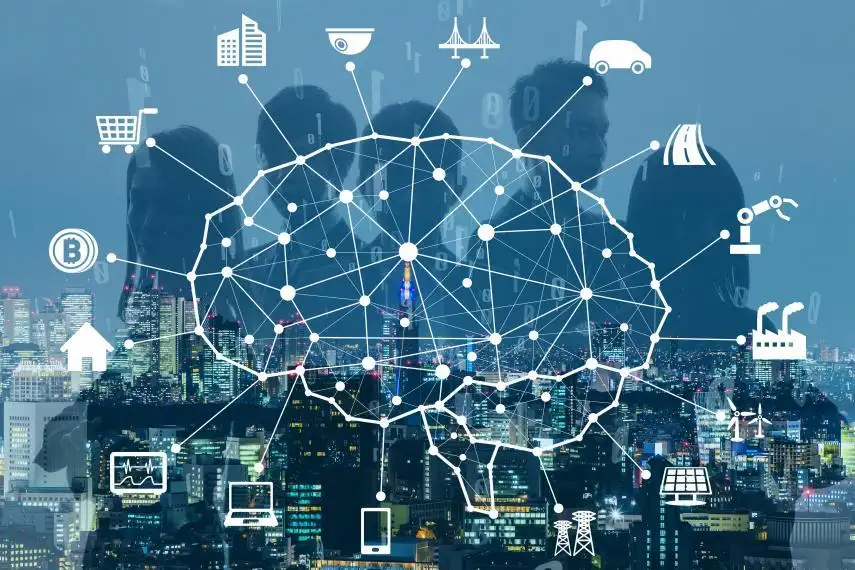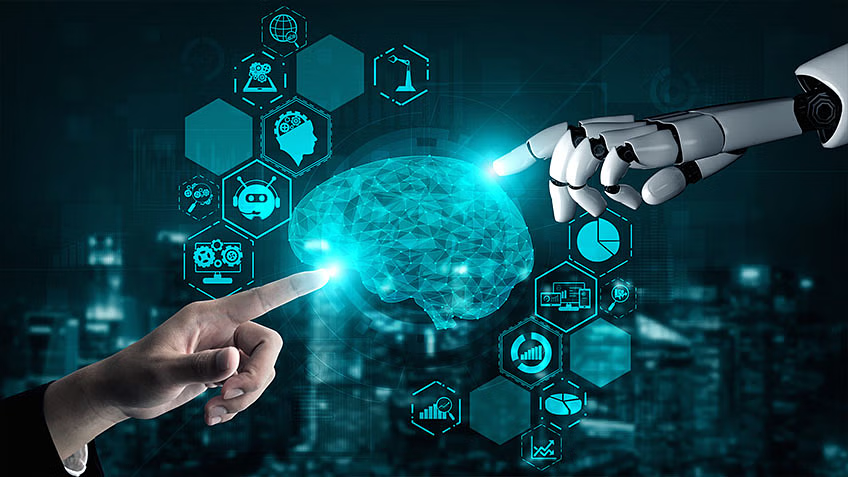As we delve further into the vast landscape of deep learning, we uncover the profound implications of this technology for society, explore the novel methodologies being developed, and envision a future where AI integrates seamlessly into our daily lives.
Advanced Methodologies in Deep Learning
- Federated Learning:
- Privacy-Preserving AI: Federated learning enables the training of AI models across decentralized devices while preserving data privacy. Instead of sharing raw data, models are trained locally on user devices and only the learned updates are aggregated.
- Applications: This approach is particularly useful in healthcare, where sensitive data can remain on local servers while contributing to the development of robust models. Federated learning also enhances personalized services without compromising user privacy.
- Self-Supervised Learning:
- Data Efficiency: Self-supervised learning leverages unlabeled data to learn useful representations, reducing the reliance on large labeled datasets. The model generates its own labels from the input data, facilitating efficient learning.
- Breakthroughs: Models like BERT (Bidirectional Encoder Representations from Transformers) and GPT (Generative Pre-trained Transformer) have demonstrated the power of self-supervised learning in natural language understanding and generation.
- Graph Neural Networks (GNNs):
- Complex Data Structures: GNNs are designed to handle data represented as graphs, capturing relationships and dependencies between entities. This makes them suitable for tasks involving social networks, molecular structures, and recommendation systems.
- Innovations: GNNs are being used to predict molecular properties for drug discovery, understand social dynamics, and enhance recommendation systems by modeling user-item interactions.
- Neural-Symbolic Integration:
- Combining Strengths: Neural-symbolic systems integrate the learning capabilities of neural networks with the reasoning power of symbolic AI. This hybrid approach enhances interpretability and allows for complex reasoning.
- Real-World Impact: Applications include legal reasoning, where the ability to reason with explicit rules and regulations is crucial, and scientific discovery, where symbolic reasoning can guide hypothesis formation and experimentation.
Transformative Applications
- Smart Cities:
- Urban Planning: AI models analyze vast amounts of data from various urban sensors to optimize traffic flow, reduce energy consumption, and improve public services. This leads to more sustainable and efficient cities.
- Public Safety: AI-driven surveillance systems enhance public safety by detecting unusual activities, predicting crime hotspots, and coordinating emergency response efforts.
- Space Exploration:
- Autonomous Rovers: AI-powered rovers on Mars and other celestial bodies conduct scientific experiments, navigate complex terrains, and make autonomous decisions in real-time, advancing our understanding of the universe.
- Astrobiology: AI analyzes data from space missions to search for biosignatures and other indicators of extraterrestrial life, aiding in the quest to understand life beyond Earth.
- Agriculture and Food Security:
- Precision Agriculture: AI optimizes crop management by analyzing data on soil health, weather patterns, and plant growth. This increases yields, reduces resource usage, and enhances food security.
- Supply Chain Optimization: AI models track and predict food supply chain dynamics, reducing waste and ensuring efficient distribution from farms to consumers.
- Mental Health and Wellbeing:
- AI Therapy: AI-driven therapeutic tools provide mental health support through chatbots and virtual therapists, offering accessible and personalized mental health care.
- Behavioral Analysis: AI models analyze behavioral data to detect early signs of mental health issues, enabling timely interventions and support.
Ethical and Societal Considerations
- AI Governance and Policy:
- Regulatory Frameworks: Developing robust regulatory frameworks ensures that AI systems are developed and deployed responsibly. These frameworks address issues like privacy, security, fairness, and accountability.
- Global Collaboration: International collaboration is essential for setting global standards and guidelines for AI ethics and governance, fostering a unified approach to managing AI’s impact on society.
- Human-Centric AI:
- User Empowerment: Designing AI systems that empower users by enhancing their capabilities and providing meaningful control over AI interactions is crucial for building trust and acceptance.
- Ethical Design: Incorporating ethical considerations into the design and development process ensures that AI systems align with human values and societal norms.
- AI and Economic Transformation:
- Future of Work: AI’s impact on the labor market requires proactive measures to ensure workforce readiness. This includes reskilling and upskilling programs to equip workers with the skills needed for AI-driven economies.
- Economic Equity: Ensuring that the benefits of AI are distributed equitably across different segments of society helps prevent economic disparities and promotes inclusive growth.
- Environmental Sustainability:
- AI for Climate Action: AI models predict and mitigate the effects of climate change by optimizing energy usage, monitoring environmental changes, and supporting renewable energy initiatives.
- Sustainable Development: AI supports sustainable development goals by improving resource management, enhancing agricultural practices, and fostering innovation in sustainability.
Vision for the Future
- AI-Augmented Creativity:
- Art and Culture: AI is increasingly being used in creative fields, assisting artists, musicians, and writers in their creative processes. AI can generate art, compose music, and even write poetry, pushing the boundaries of human creativity.
- Collaborative Creativity: AI tools enhance collaboration between humans and machines, enabling new forms of artistic expression and cultural production.
- AI in Education:
- Personalized Learning: AI-powered educational platforms provide personalized learning experiences, adapting to the needs and pace of individual students. This fosters a more inclusive and effective educational environment.
- Lifelong Learning: AI supports lifelong learning by offering continuous education and training opportunities, helping individuals stay relevant in a rapidly changing world.
- Healthcare Innovations:
- Predictive Medicine: AI models predict disease outbreaks, track health trends, and personalize treatment plans, transforming healthcare into a more proactive and preventive field.
- Robotics in Surgery: AI-driven surgical robots assist surgeons with precision tasks, improving surgical outcomes and reducing recovery times.
- Human-Machine Symbiosis:
- Enhanced Human Capabilities: AI augments human capabilities, enabling new forms of interaction and collaboration. From brain-computer interfaces to augmented reality, AI enhances our ability to perceive and interact with the world.
- Ethical Symbiosis: Ensuring that human-machine symbiosis aligns with ethical principles is crucial for fostering a harmonious and beneficial relationship between humans and AI.
Conclusion
The realm of deep learning is a dynamic and ever-expanding field, with boundless potential to reshape our world. Advanced methodologies like federated learning, self-supervised learning, and graph neural networks push the boundaries of what AI can achieve. Transformative applications in smart cities, space exploration, agriculture, and mental health illustrate the profound impact of deep learning on various aspects of life.
Ethical and societal considerations guide the responsible development and deployment of AI, ensuring that it aligns with human values and promotes societal wellbeing. As we look to the future, the integration of AI with creativity, education, healthcare, and human-machine symbiosis promises to unlock new possibilities and drive innovation.
The journey of deep learning is one of continuous discovery and innovation. By harnessing its power responsibly and ethically, we can create a smarter, more equitable, and sustainable world, where AI serves as a force for good, enhancing human capabilities and addressing global challenges. The future of deep learning is bright, and its potential to transform our lives is limitless.



